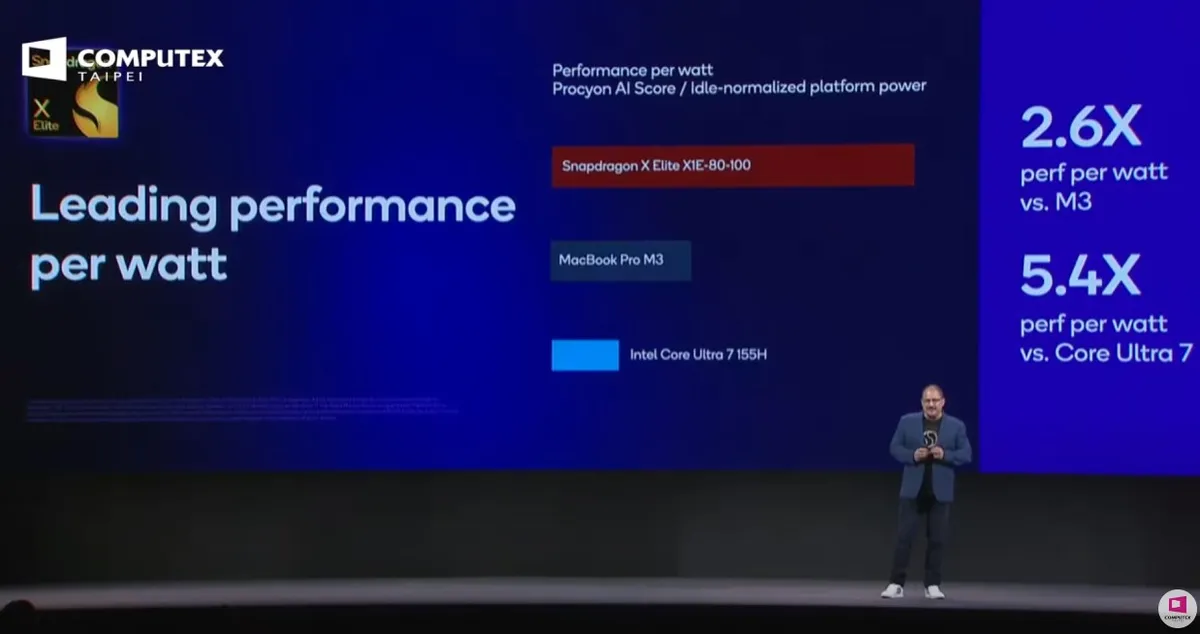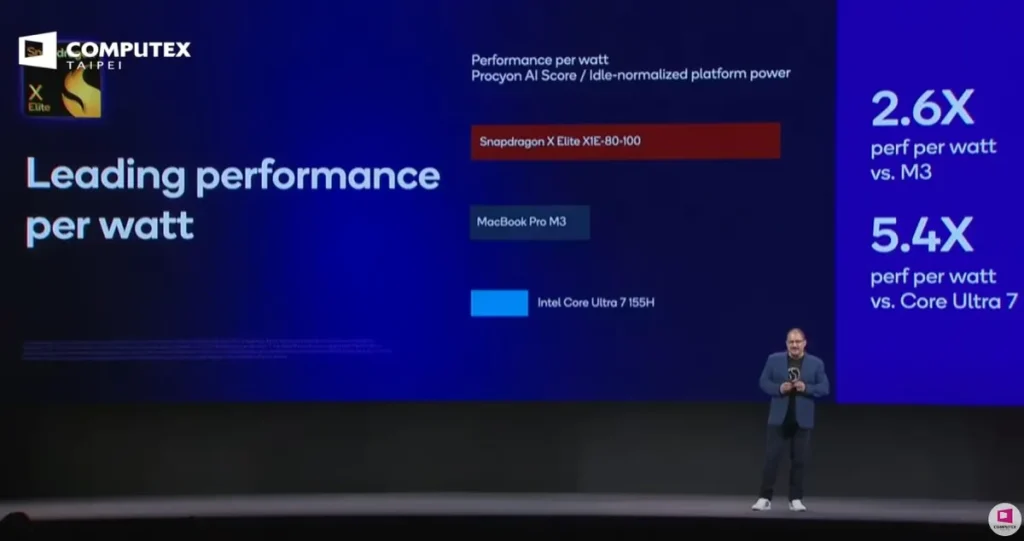
(Image credit: Qualcomm / Computex)
Recently, Qualcomm President and CEO Cristiano Amon appeared in the keynote address at COMPUTEX 2024, emphasizing how the Snapdragon X-series powered Copilot+ PC is revolutionizing the PC industry. During a subsequent media briefing, when asked about the risks of Qualcomm’s SoC production being almost entirely dependent on TSMC, Cristiano Amon candidly acknowledged that a dual foundry strategy is under consideration.

According to Business Korea, Cristiano Amon stated that Qualcomm’s current focus must remain on TSMC’s foundry production. However, having one company handle both aspects of production might require significant effort. He welcomed collaboration with both TSMC and Samsung and expressed support for this approach, indicating ongoing considerations in this regard.
Previous reports have mentioned that with Qualcomm shifting a large volume of orders to TSMC, Qualcomm has, for the first time in three years, dropped out of Samsung’s top five revenue sources. This has caused some anxiety for Samsung and is a major reason behind their eagerness to begin mass production of the second-generation 3nm GAA process, hoping to bring Qualcomm back to the negotiation table.
Last year, reports suggested that Qualcomm, concerned about TSMC’s limited production capacity, initially planned to implement a dual foundry strategy starting in 2024. The fourth-generation Snapdragon 8 was to use TSMC’s N3E process for some versions while employing Samsung’s 3GAP (SF3) process for Galaxy series smartphones. However, due to Samsung’s conservative 3nm capacity expansion plans and unstable yield rates, Qualcomm ultimately decided to delay this strategy.
Rumors indicate that Qualcomm still intends to adopt a dual foundry strategy for the fifth-generation Snapdragon 8 in 2025, having requested samples from both TSMC and Samsung for further evaluation. In recent years, Qualcomm’s SoC prices have been increasingly burdensome for some partners, and the company hopes that the new strategy will help reduce chip costs.


